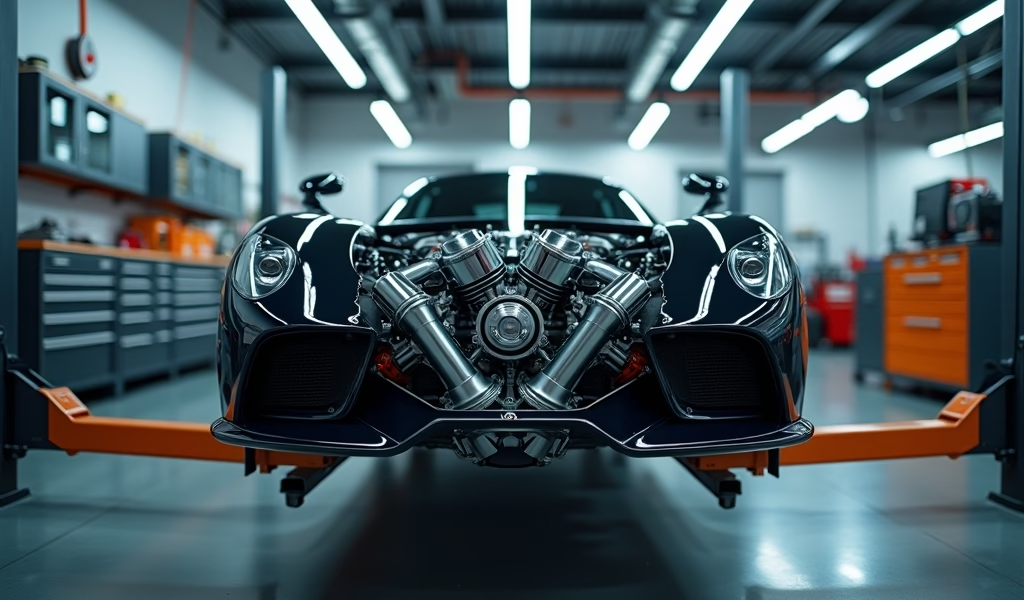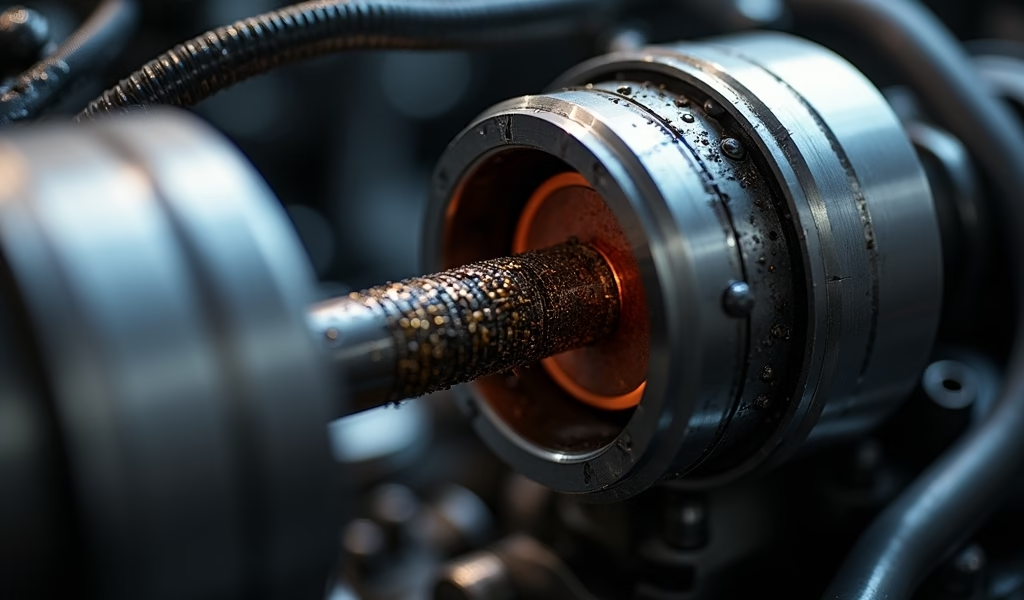Overview
This article explains how proper piston-to-wall clearance (typically 0.001″-0.005″) is critical for engine performance and longevity, with five potential fixes for incorrect clearance: cylinder honing, oversized pistons, cylinder sleeve installation, proper piston selection, and professional block machining. Signs of improper clearance include engine overheating, piston slap noises, increased oil consumption, and reduced power, making precise measurement and correction essential for preventing premature engine wear and failure.
Table of Contents
- Understanding Piston to Wall Clearance
- Signs of Incorrect Piston Clearance
- How to Measure Piston to Wall Clearance
- Fix #1: Cylinder Honing
- Fix #2: Oversized Pistons
- Fix #3: Cylinder Sleeve Installation
- Fix #4: Proper Piston Selection
- Fix #5: Professional Block Machining
- Conclusion
- Frequently Asked Questions
Understanding Piston to Wall Clearance
Piston to wall clearance is that magical little gap between your piston and the cylinder wall that can make or break your engine’s performance. Think of it as the breathing room your pistons need to do their job properly. Too tight, and they’ll seize up faster than your brain after an all-night wrenching session. Too loose, and you’ll hear your engine knocking like an unwelcome visitor at 3 AM.
When I first started working on engines, understanding piston to wall clearance seemed like rocket science, but I promise you it’s not that complicated. This critical measurement typically ranges from 0.001″ to 0.005″ (0.025mm to 0.125mm) depending on your engine type, materials, and intended use. Performance engines often run tighter clearances for better sealing, while daily drivers might have a bit more wiggle room.
The perfect piston to wall clearance maintains that delicate balance between minimizing blow-by (where combustion gases escape past the rings) and allowing enough space for thermal expansion as your engine heats up. Remember, aluminum pistons expand more than cast iron cylinder walls when hot, which is why proper clearance is absolutely essential.
Signs of Incorrect Piston Clearance
Your engine has ways of telling you when piston clearance isn’t right, and trust me, it’s worth listening. When clearance is too tight, you might notice your engine overheating during normal driving. That’s because the pistons are expanding and starting to grab the cylinder walls, creating excessive friction and heat. In severe cases, this can lead to that dreaded “seized engine” diagnosis that no car owner wants to hear.
On the flip side, excessive clearance often announces itself with a distinct cold-start piston slap – that rattling noise that mysteriously disappears as your engine warms up. This happens because the piston has too much room to rock side-to-side until it expands with heat. You’ll also likely notice increased oil consumption, as more oil sneaks past those loose-fitting pistons and burns in the combustion chamber.
Other symptoms of incorrect clearance include reduced power (who wants that?), poor fuel economy (bad for your wallet), excessive exhaust smoke (bad for making friends with your neighbors), and accelerated engine wear (bad for everything). Catching these signs early can save you from a major rebuild down the road.

How to Measure Piston to Wall Clearance
Before diving into fixes, let’s talk about measuring your piston to wall clearance accurately. This isn’t guesswork – precise measurements are essential for engine longevity. The most common method involves using a dial bore gauge for the cylinder and a micrometer for the piston, then calculating the difference.
First, measure your cylinder bore in multiple locations – at the top, middle, and bottom, and in both the thrust and non-thrust planes (typically perpendicular to the wrist pin). Cylinders rarely wear evenly, so taking multiple measurements gives you the full picture. Record the smallest diameter you find, as this will create the tightest clearance.
Next, measure your piston’s skirt diameter at 90° to the wrist pin axis, about 1/2 inch up from the bottom of the skirt. This is typically the widest part of the piston. Modern pistons often have different piston profiles and may require specific measurement points, so always check your manufacturer’s specifications.
The difference between these two measurements is your piston to wall clearance. For example, if your cylinder measures 4.000″ and your piston measures 3.997″, your clearance is 0.003″. Compare this to the specifications in your engine manual – this is one area where following factory specs is crucial unless you’re building for specialized performance.
Fix #1: Cylinder Honing
One of the most common approaches to correcting piston to wall clearance is cylinder honing. Think of honing as giving your cylinder walls a precise, controlled scrub to create the perfect finish and diameter. This process removes a small amount of material while creating the ideal crosshatch pattern that helps retain oil on the cylinder walls.
There are several honing methods available depending on your needs:
- Plateau honing: Creates a super-smooth running surface with tiny valleys to hold oil
- Ball honing: Uses abrasive balls to gently remove material
- Diamond honing: Employs industrial diamonds for precision material removal
For minor clearance adjustments, a ball hone (sometimes called a bottle brush hone) attached to a drill can work for DIYers. However, for serious engine builds, I strongly recommend professional honing with a torque plate attached to simulate the stresses of a fully assembled engine. This prevents the cylinders from returning to a slightly different shape after assembly.
After honing, thorough cleaning is critical. I’m talking about a multi-step process using hot soapy water, clean rinse water, and then a final wipe with quality solvents to remove all abrasive particles. Any leftover grit is like throwing sand in your engine – a recipe for premature wear on your fresh build.
Fix #2: Oversized Pistons
When cylinders become worn or damaged beyond what honing can fix, installing oversized pistons after boring the cylinders is often the best solution. Think of it as giving your engine a fresh start with brand-new running surfaces. Oversized pistons typically come in increments of 0.010″, 0.020″, 0.030″, and sometimes 0.040″ or more over the standard size.
The process starts with measuring your cylinder wear. If you’re seeing more than about 0.005″ of wear or any significant damage like scoring or scuffing, boring to the next oversize is usually the way to go. This is where having a machine shop’s expertise really pays dividends – they’ll bore your cylinders to precisely the right dimension for your new pistons.
When selecting oversized pistons, you’ll need to consider more than just diameter. Compression ratio, piston style, dome/dish volume, ring placement, and material all play important roles in engine performance. For daily drivers, I generally recommend sticking with pistons similar to your original equipment. For performance builds, talking with engine builders who specialize in your make can provide valuable guidance.
Remember that proper bore diameter is critical when installing oversized pistons. Too tight, and you risk seizure; too loose, and you’re back to the problems we’re trying to solve. Most piston manufacturers provide recommended clearance specifications that should be followed religiously.
Fix #3: Cylinder Sleeve Installation

When cylinders are damaged beyond what boring can fix, or when you’ve already bored to the maximum safe diameter, cylinder sleeves (also called liners) offer a salvation that can bring new life to an otherwise retired block. These precision-machined metal inserts essentially create a new cylinder surface within your existing block.
Sleeving is a specialized process that involves machining the original cylinder to a larger size, then pressing or freezing in a new cylinder sleeve made of cast iron or other appropriate material. After installation, the sleeves are finish-bored and honed to match your desired piston size, effectively resetting your engine block to like-new condition.
There are two main types of sleeves to consider:
- Dry sleeves: These don’t contact the engine coolant directly and rely on the surrounding block for cooling
- Wet sleeves: These have direct contact with coolant and are typically used in heavy-duty applications
The advantages of cylinder sleeves go beyond just fixing clearance issues. They can actually improve performance in some cases, especially when using specialized materials like ductile iron or steel alloys that offer better wear characteristics than the original block material. This is why you’ll often find sleeved blocks in high-performance racing engines, as noted by Engine Builder Magazine.
While sleeve installation is definitely not a DIY job, finding a reputable machine shop with experience in your specific engine type will yield excellent results that can extend your engine’s life significantly. Just be prepared for the cost – this is one of the more expensive solutions on our list, but often worth every penny when salvaging a rare or valuable block.
Fix #4: Proper Piston Selection
Sometimes fixing piston to wall clearance issues isn’t about modifying what you have, but about choosing the right pistons from the start. Modern pistons come in a dizzying array of designs, each with specific clearance requirements based on their intended use, materials, and coating technologies.
For street engines that see occasional spirited driving, hypereutectic aluminum pistons with clearances around 0.0025″-0.003″ often provide the best balance of performance and longevity. These pistons expand less than traditional cast aluminum, allowing for tighter clearances without seizing concerns.
Performance applications might call for forged pistons, which are stronger but typically require slightly more clearance (often 0.0035″-0.004″) due to their greater thermal expansion characteristics. Some high-end forged pistons use exotic alloys specifically designed to control expansion, allowing tighter clearances for better ring seal without risking seizure.
If you’re dealing with a boosted application like a turbocharger or supercharger, special coatings can also help manage heat and reduce friction. Skirt coatings like Teflon and graphite can allow for slightly tighter clearances while protecting against scuffing during the critical break-in period.
Don’t overlook the impact of ring package selection when addressing clearance issues. Modern thin-ring packages can reduce friction and improve sealing with less radial tension against the cylinder walls. This sometimes allows engines to run with slightly tighter clearance without the scuffing risks of older, thicker ring designs.
Fix #5: Professional Block Machining
For the most precise and long-lasting solution to piston clearance issues, professional block machining is hard to beat. A quality machine shop can transform a problematic block into a precision instrument through various specialized processes that go beyond basic boring and honing.
Align boring/honing ensures that your main bearing bores are perfectly aligned, which might seem unrelated to piston clearance, but directly impacts how straight your crankshaft runs. A crank that wobbles even slightly can cause pistons to contact cylinder walls unevenly, creating clearance problems no matter how precisely you measure.
Deck surfacing ensures the block deck is perfectly flat and perpendicular to the cylinder bores. This critical procedure impacts both head gasket sealing and piston-to-head clearance, which indirectly affects how the pistons travel through the bores. A block with deck warpage can cause pistons to rock or tilt, creating effective clearance problems even when measurements look correct on paper.
Line boring the cam bearings (in overhead cam engines) or lifter bores (in pushrod engines) ensures that valve actuation is smooth and precise. Erratic valve movement can create momentary pressure spikes that affect piston dynamics and ring sealing, sometimes manifesting as apparent clearance issues.
While these advanced machining services aren’t cheap, they’re an investment in engine reliability that pays dividends through improved performance, reduced oil consumption, and extended engine life. Many of the common issues with hydraulic systems like brakes can be traced to bore imperfections – the same principle applies inside your engine.
Conclusion
Piston to wall clearance might seem like a small detail in the grand scheme of engine building, but it’s one of those critical measurements that separates a smoothly purring powerplant from a ticking time bomb. Whether you’re restoring a classic, building a race engine, or just trying to fix a worn-out daily driver, understanding and correctly setting this clearance is fundamental to your success.
From the relatively simple approach of cylinder honing to more involved solutions like sleeve installation or comprehensive block machining, there’s a fix for virtually every piston clearance issue. The key is accurate measurement, careful selection of the right approach for your specific situation, and either meticulous DIY work or partnering with skilled professionals who understand your goals.
Remember that piston clearance works in concert with ring end gap, bearing clearances, and numerous other precision measurements to create a harmonious, reliable engine. Addressing one without considering the others is like tuning just one string on a guitar – you might fix one note, but the overall performance will still be off.
If you have specific questions about piston to wall clearance for your particular engine or need advice on your rebuild project, don’t hesitate to contact us or visit our website. Our team of experienced engine builders is always happy to help fellow enthusiasts get the most from their projects, whether it’s a mild street build or an all-out racing application.
Frequently Asked Questions
What happens if piston clearance is too tight?
Pistons can seize in the cylinder due to insufficient room for thermal expansion. This typically results in engine failure, overheating, and expensive repairs.
How does piston clearance affect oil consumption?
Excessive clearance allows more oil to pass by the rings and burn in the combustion chamber. You’ll notice blue smoke from the exhaust and regularly low oil levels.
Can I measure piston clearance without removing the engine?
No, accurate measurement requires the pistons and block to be completely disassembled. In-situ measurements won’t provide the precision needed for proper engine building.
How often should piston clearance be checked?
Piston clearance should be checked during engine rebuilds or when investigating specific symptoms of wear. Normal engines don’t require regular clearance checks unless you’re experiencing problems.
Do different engines require different piston clearances?
Yes, clearance specifications vary based on engine design, materials, and intended use. Performance engines, diesel engines, and aluminum vs. iron blocks all have different optimal clearance ranges.

